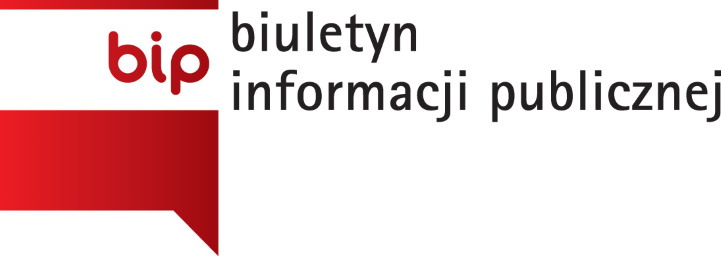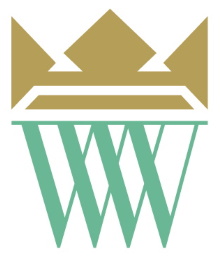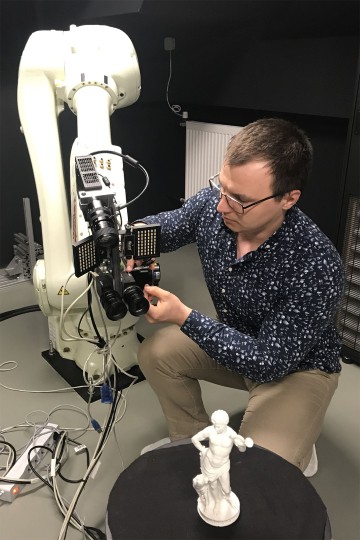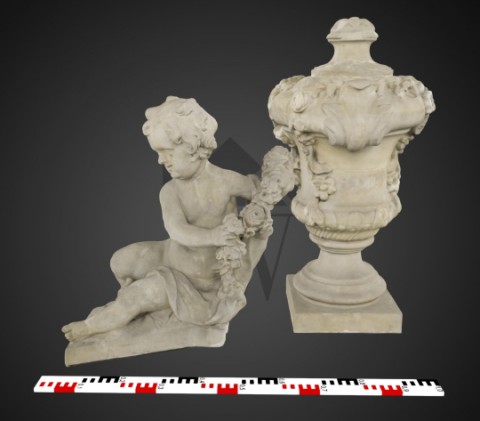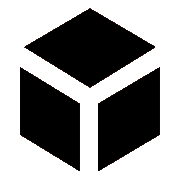Digitisation and 3D publication of digital resources under the project “www.muzeach”
The task “Digitisation and 3D publication of digital resources” includes all three-dimensional documentation techniques that will be used in the project. These are:
- photogrammetric documentation that will be applied mainly to larger spatial forms, such as fragments of historic architecture (garden sculptures);
- the measuring technique known as structured light scanning, which will be used to document small items with very complex geometry, such as ceramic figurines from the Wilanów biscuit porcelain collection.
We often think about “three-dimensional techniques” in universal terms. Meanwhile, this collective term can involve measurement techniques that are different in terms of possibilities and constraints arising from the nature of a given method. Being aware of these technical conditions, we have prepared a project that uses many of them to achieve the best documentation results. Hence the use of photogrammetric techniques supported by ToF (Time of Flight) laser measurement in addition to the structural light scanning technique.
The parameters of individual measurement types are selected in such a way that the resulting documentation has the widest possible range of applications. We want it to be useful for studies in art history, conservation work, and even future educational offer, for instance, the creation of 3D-printed copies.
For example: the documented ceramic figures will be measured with spatial resolution of more than 2.5 thousand dots per 1 square mm. With such precision of registration, it will be possible to prepare not only great visualisation models (for which a much lower resolution would suffice, too), but also high-precision three-dimensional printing moulds – with detail mapped at the level of hundredths of a millimetre.
During digitisation, we will also use photogrammetric methods for 20 garden sculptures, taking pictures with 0.5 mm pixels. Photos will be made in several series and at different angles to obtain an almost complete coverage of the surface. Thanks to the techniques used, the resulting three-dimensional model has realistic texture and maps even the smallest detail of the sculpture.
Regardless of the technique by which data is obtained to build a three-dimensional model, information is first stored in the form of the so-called point cloud (visualising all points registered on the monument surface). Then, it is converted into a model in the form of a triangle mesh. This method will be used to create models of sculptures. Appropriately simplified, they will be published on the public website Sketchfab, where the Museum of King Jan III’s Palace at Wilanów has had its site for years (https://sketchfab.com/muzeum_wilanow). A multisearch website, which will be developed under the project, will allow you to watch models alongside other digital museum resources.
Project co-financed from European Funds and from the funds of the Ministry of Culture and National of the Republic of Poland. The project is implemented under the Operational Program Digital Poland for the years 2014-2020, Priority Axis 2 “E-government and open government,” Action 2.3 “Digital availability and usefulness of public sector information,” Sub-action 2.3.2 “Digital availability of culture resources.”

suggested

Advanced 2D presentation techniques under the project “www.muzeach”
The task “Advanced 2D presentation techniques” involves two ranges of documentation activities. Although they are based on digital photographic documentation, …

Digitisation and 2D publication of exhibits under the project “www.muzeach”
The project “www.muzeach,” co-financed from the Operational Program Digital Poland, includes the task “Digitisation and 2D publication of exhibits.” It …

The project “www.muzeach”, co-financed by the EU, has started
The project “www.muzeach” started on April 1, 2019.
